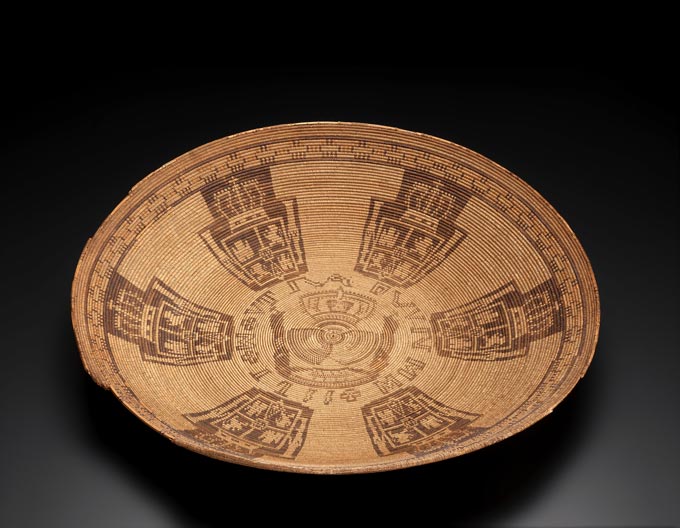
This basket by Juana Basilia Sitmelelene (Chumash), created 1815–1822 at Mission San Buenaventura, incorporates Spanish coin designs with traditional Chumash basketry. When viewing this basket, educator Nicolasa I. Sandoval (Santa Ynez Band of Chumash Indians) said, “I can only imagine the circumstances Sitmelelene lived and worked in….Sitmelelene sings to me a song of resilience through her basket. She lives.”
February 23, 2025 - The Smithsonian’s National Museum of the American Indian’s new digital lesson “California Native American Survival and Resilience During the Mission Period: A Source Investigation” provides a more complete understanding of U.S. colonial history by including Native American experiences and agency during the brief era of Spanish colonization and the mission system.
This lesson was created in two editions to align with social studies, history and English-language arts standards for seventh through 12th grades nationwide and for fourth grade in California. Through inquiry, students build critical thinking skills as they analyze and evaluate primary and secondary sources to answer the central question: How did Native people of California resist and persist in the face of extreme adversity?
This resource bridges classroom learning with the most recent historical and archaeological scholarship that includes research and perspectives of Native scholars and cultural experts, as well as testimonials of present-day citizens of California tribal nations and communities that were impacted by the missions.
Students will gather evidence that shows how different forms of resistance and cultural persistence enabled Native people of California to not only survive the abuse and oppression of the Spanish mission system, but to also adapt, evolve and continue as resilient tribal communities.
This lesson is part of the Native Knowledge 360° platform. Native Knowledge 360° is a powerful teaching resource that provides educators and students with more complete narratives about history and culture. Its breadth provides educators with the tools they need to teach more comprehensively about Indigenous peoples and their history. Organized into a series of diverse inquiry-based resources, the online materials provided in Native Knowledge 360° include teacher resources and accompanying graphic organizers to be directly implemented into the classroom. Resources are aligned with state and national learning standards. These also serve as the foundation for educators to rethink and build their curriculum to include more complex and accurate understandings of Indigenous peoples and their cultures throughout history and into the present day.
The lesson is now available online.
Funding
Lead funding for the Native Knowledge 360° education initiative provided by the Federated Indians of Graton Rancheria, Margaret A. Cargill Philanthropies and Bonnie and Jere Broh-Kahn.
Major funding provided by Elizabeth Hunter Solomon, Cherokee Nation, The Henry Luce Foundation, The Coca-Cola Foundation, Sterne Family, Booth Ferris Foundation, Ralph Lauren Corporate Foundation, The Nathan Cummings Foundation, Hermès, Deutsche Bank Americas Foundation, Lilly Endowment Inc., and the National Museum of the American Indian’s National Council.
Additional funding provided by Macy’s, Con Edison, T.E.W. Foundation, William Lomax, Rodney Coenen, and the Smithsonian Secretary and the Smithsonian Seattle Regional Council.
About the Museum
In partnership with Native peoples and their allies, the National Museum of the American Indian fosters a richer shared human experience through a more informed understanding of Native peoples. The museum strives toward equity and social justice for the Native peoples of the Western Hemisphere through education, inspiration and empowerment. Through two locations, it features exhibitions and programs in New York City and the National Mall in Washington, D.C. For additional information, including hours and directions, visit AmericanIndian.si.edu.
Source: Smithsonian







